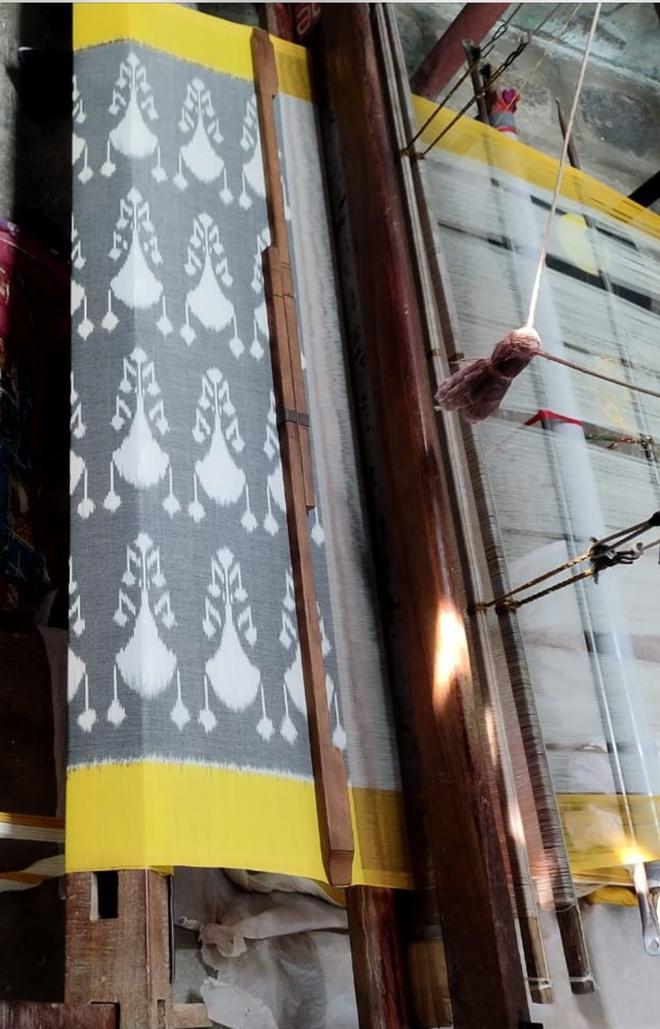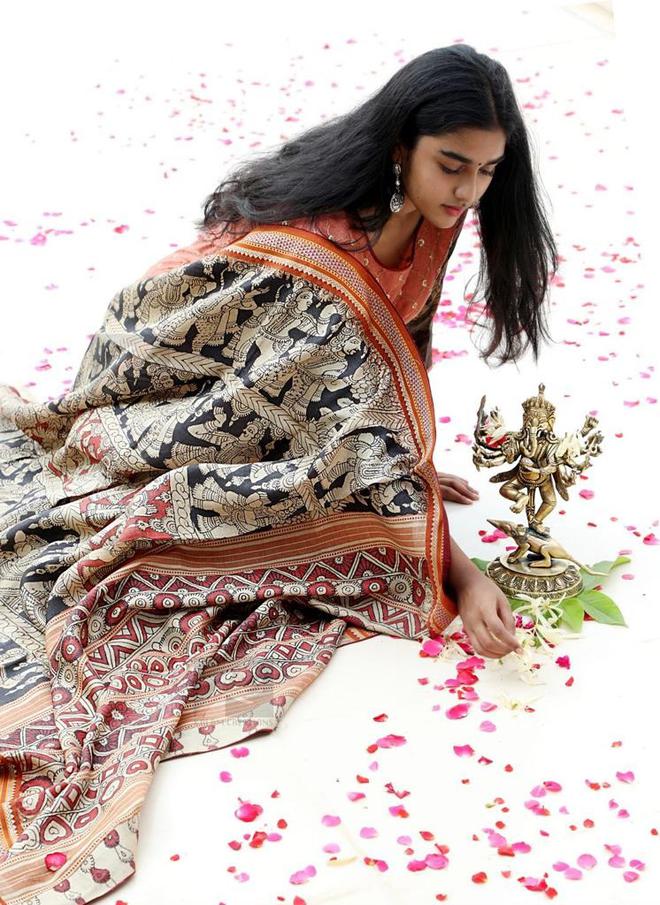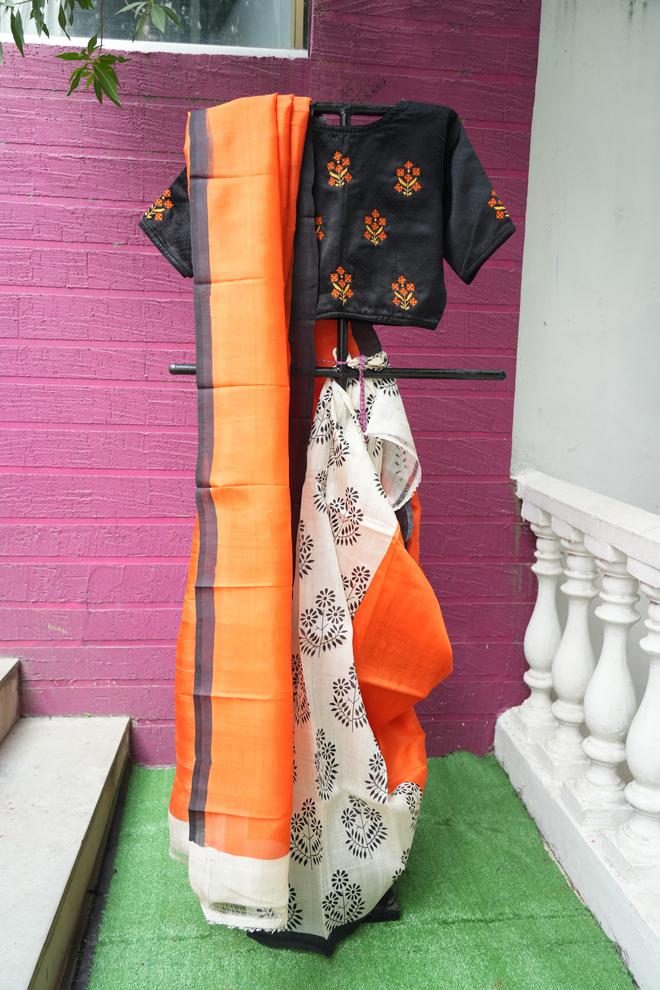Post-pandemic, while the retail sector noticed the tendency of ‘revenge shopping’ — splurging — immediately post lockdowns, the buying patterns have more or less shifted to a new normal, say entrepreneurs in Hyderabad. While sales have picked up and look promising, preferences lean towards lightweight, easy-to-drape and easy-to-maintain fabrics. Tussar, organza and soft silks are preferred for festive occasions or to attend weddings. Heirloom-worthy Kanchi and Banaras silks are preferred for the bride and the immediate family.
Uncluttered design aesthetics

The design and colour vocabulary has witnessed a shift. Sudha Rani of Abhihaara (@abhihaara on Instagram), who works with ikat weavers, says weavers were eager to weave multiple motifs on saris to cater to the retail demand for busy-looking saris. “Geometric motifs of rectangles, triangles, simple lines, florals, elephants and birds are commonly woven in the ikat method. Some weavers were game to add several layers and combine different motifs to make the saris look busy. But the saris end up looking cluttered. We had to reassure weavers that we can keep the patterns simple and uncluttered patterns but can experiment with colours.”
Along with the time-tested deep reds, blues, blacks and whites of ikats, the festive collection has monochrome blue, black, grey, cinnamon brown and pastel shades.
The tendency towards lightweight garments and saris has also heightened post-pandemic, points out Mamata Reddy of KalamCreations (@KalamCreations on Instagram), who works extensively with kalamkari artisans. “Young women do not want garments with lining. Similarly, women in different age groups want lightweight saris.”
Chapters from the epics
The absence of retail/wholesale pressure to deliver orders during the two years of the pandemic, says Mamata, helped her and her artisans to develop new designs over video calls. The saris with borders depicting stories from the epics were developed during the period.

Both entrepreneurs state that there has been a revival of the three-shuttle ‘kuttu’ border. Saris with multicolour checks and the kuttu border, reminiscent of the Chettinad style, have a number of takers, adds Mamata. Price-conscious buyers have been embracing silks from Gadwal that have similar design sensibilities as that of Kanchi silks, Sudha points out.
Sarvamangala of Anagha (@anagha_designs on Instagram) has noticed more women buying lightweight tussars, organza and soft silks in lighter shades. Habituated to extended periods of work from home during the pandemic, preferences have veered towards lighter saris, she notes. “Being a handloom curator, I notice that women who love wearing saris do so even now, but less often. One of the main stress points is about the maintenance involved; for instance, not many want cotton saris that require starch and ironing.”
WFH hangover

While Sarvamangala stocks handpainted kalamkari silks for those who want something unique, she also notices teens and young women enquiring about ready-to-wear saris with stitched pleats and an attached petticoat so that the saris can be slipped on like a pair of jeans and zipped up. “There is a clientele that appreciates handloom silks. But there is also the increased demand for fabrics like rayon and polyester-silk blends that are cheaper. Festive wear has also become more about bling than about aesthetic appeal, which used to be a norm a few years ago.” The festivities aren’t only about silks, adds Sudha. The ikat cotton saris find takers during the winter-festive season since some of the two-ply kinds of cottons can be worn during Telangana winters as well. “Be it cotton or silk, people want something classy and are willing to spend ₹9000 to ₹10,000 for a sari. But those who were purchasing four or five pre-pandemic now settle for two or three,” she says.
Mamata concurs and adds, “For weddings, those who are accompanying the bride for mehndi ceremonies, for example, want something simple yet striking, at an affordable range.”







